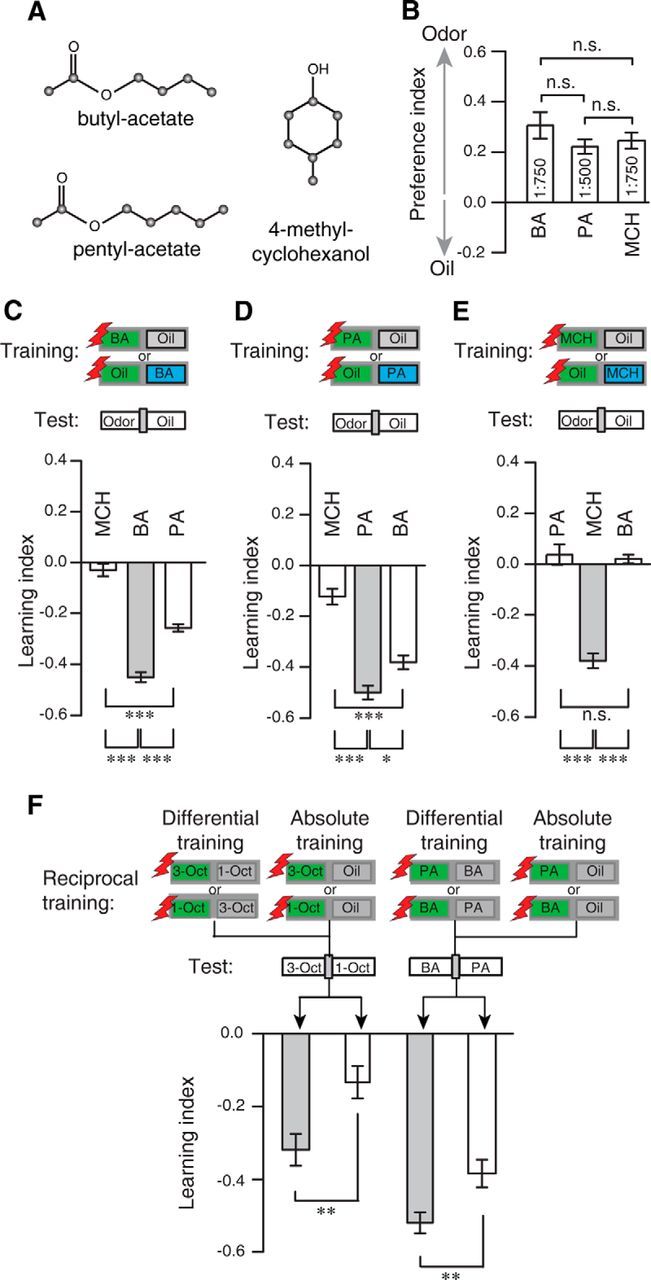Figure 9.

Generalization across a second pair of similar odors. A, Chemical structures of the three odorants used: BA, PA, and MCH. B, Odor preferences of naive flies for the odorants BA, PA, and MCH at the dilutions indicated within the bars in a T-maze choice situation against the diluent mineral oil (Oil). No difference between the three odors at the indicated concentrations were observed. n.s., Not significant (p > 0.05; one-way ANOVA with Bonferroni post hoc test). Bars indicate mean ± SEM; n = 4–8 for each experiment. C–E, Absolute, reciprocal training of BA (C), PA (D), and MCH (E) against the diluent and test for the avoidance of each odor. In all cases, flies strongly avoided the trained odor (gray bars). Generalization was observed if flies are trained with either BA or PA and tested for the respective similar odor, but not if they were tested for the dissimilar odor MCH (C,D). Flies did not generalize to BA or PA after training with MCH (E): n = 12 for each experiment. Bars indicate mean ± SEM; n.s., Not significant (p > 0.05); *p < 0.05; ***p < 0.001; one-way ANOVA with Bonferroni post hoc test. F, Comparison between preference indices after absolute and differential training. Aversive learning was significantly higher after differential training compared with absolute training, both for the odor pairs 1-Oct/3-Oct (shown also in Fig. 8A) and BA/PA. **p < 0.01 (two-sample t test). n = 32 for each experiment.
